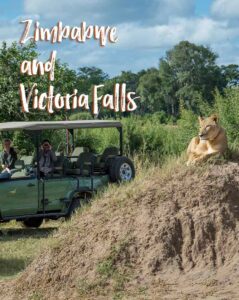Zambia & Zimbabwe Safari
Visiting these two African safari destinations has an additional grand experience – witnessing the thundering Victoria Falls, one of the spectacular natural wonders in the world. Adrenaline seekers can go white water rafting in the Zambezi or embark on a helicopter ride over the largest waterfall in the world for a softer thrill. Zambia is known for its remote safari areas and many of the luxury adventure camps operate walking safaris taking you deep in the wilderness with the potential of heart thumping wildlife encounters.
Best time to travel to Zambia is during the dry season between June and November. Best time to visit Zimbabwe is during the winter season May to October.
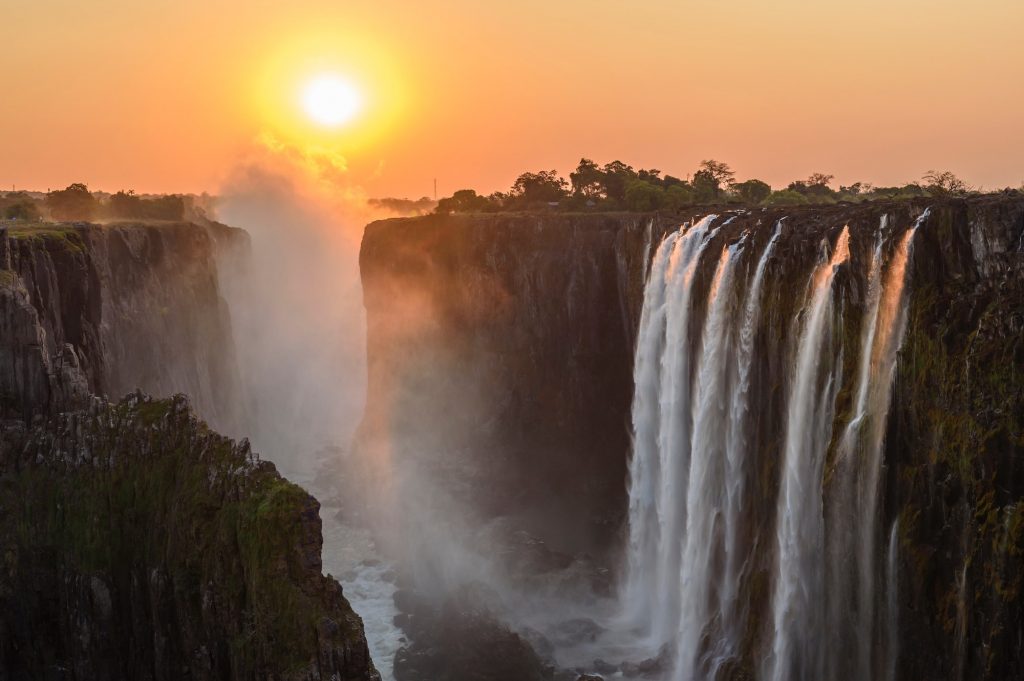
Classic African safari experiences - wildlife, adventure and stunning landscapes
Zambia and Zimbabwe are separated along the entire length of their border by the mighty Zambezi River. As a result, the two countries share an iconic natural wonder of the World, the Victoria falls. “Mosi-o-Tunya” or ‘the smoke that thunders’ – as it’s called locally is one of the largest and most spectacular waterfalls in the world. The spray and mist rise to a height of over 400 meters and can be seen from a distance of 50 kilometers. It is a sight that will keep bringing you back.
Zambia is a vast country that remains one of the region’s least explored, yet most rewarding wilderness destinations. Named after the mighty Zambezi river, it is characterized by immensity of space and spectacular sunsets.
Luangwa National Park boasts some of the most remote wilderness areas in Africa, including unique sub species of wildebeest and giraffe that thrive here, besides local birds such as the racket-tailed roller. The park’s successful anti poaching campaigns have helped develop it into a world-renowned wildlife haven.
Cradled between the Zambezi in the north and the Limpopo river in the south, Zimbabwe has an incredible wealth of landscapes, wildlife, and a rich cultural heritage going back millennia. It is famous for the remote and beautiful Mana Pools National Park named for the four pools formed by the Zambezi which draw all manner of wildlife, particularly elephants and waterfowl. Mana Pool’s magic stems from its wild remoteness. We will have close encounters with hippos, crocs, zebras and elephants and lions and possibly wild dogs and leopards too!
The Hwange National Park is the country’s largest game reserve with one of the densest concentrations of wildlife in Africa. Hwange (pronounced Wang-ee) has a ridiculous amount of wildlife – 400 species of bird and 107 types of animal including lions, giraffes, leopards, cheetahs, hyenas and the near extinct wild dogs! But the elephant is what really defines Hwange, home to about 40,000 tuskers.



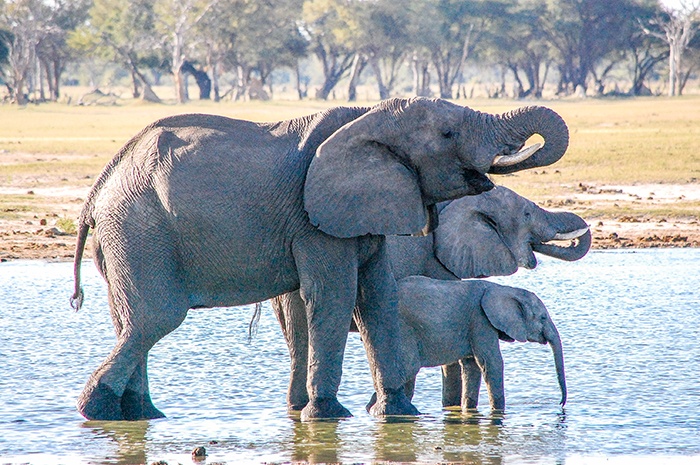
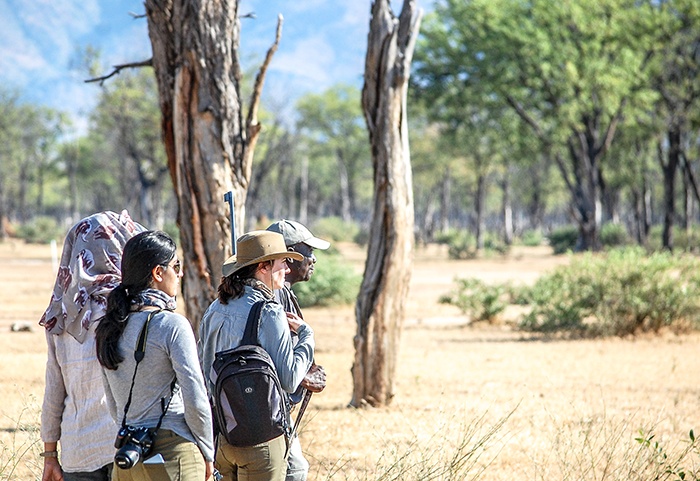
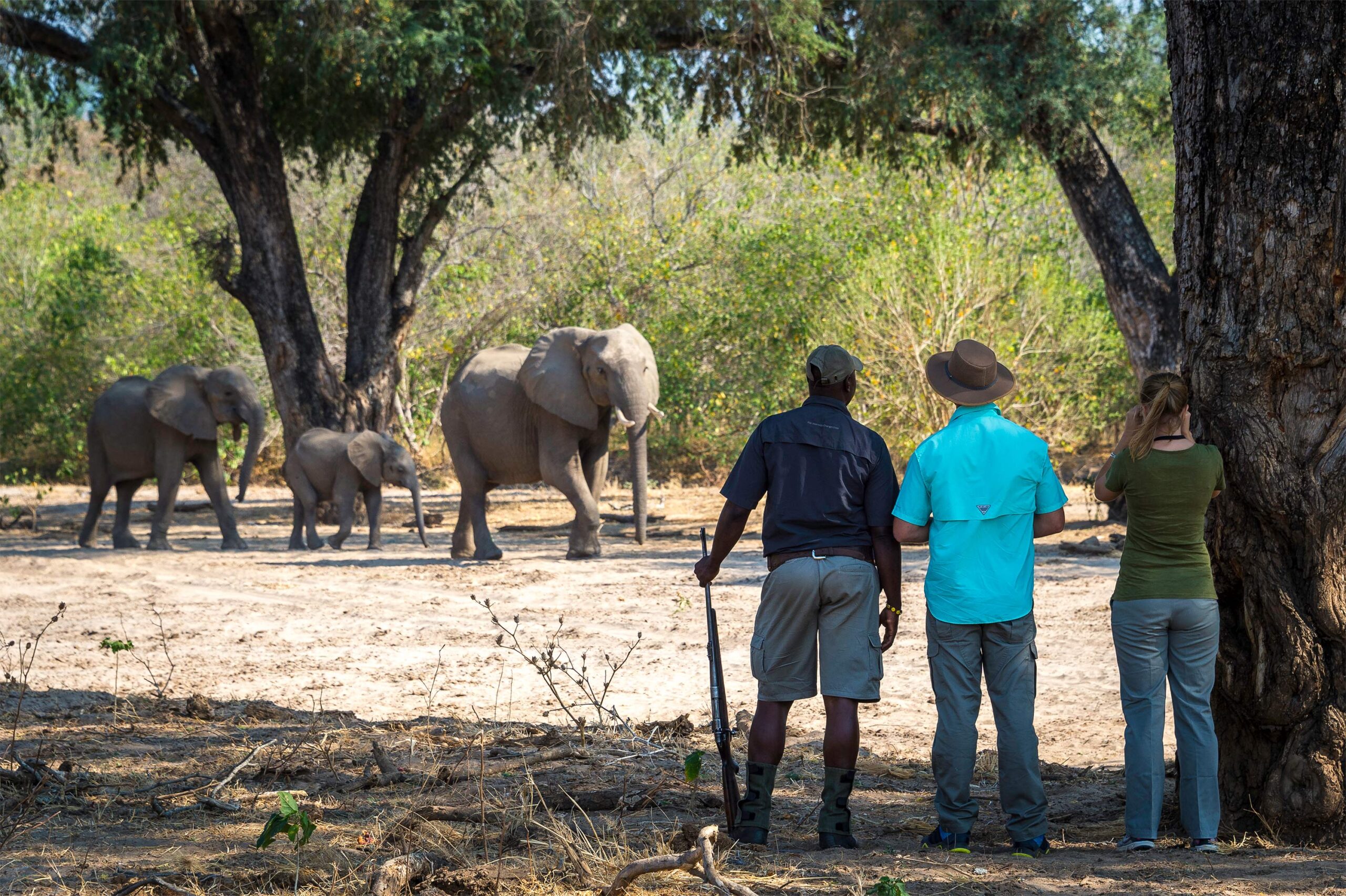
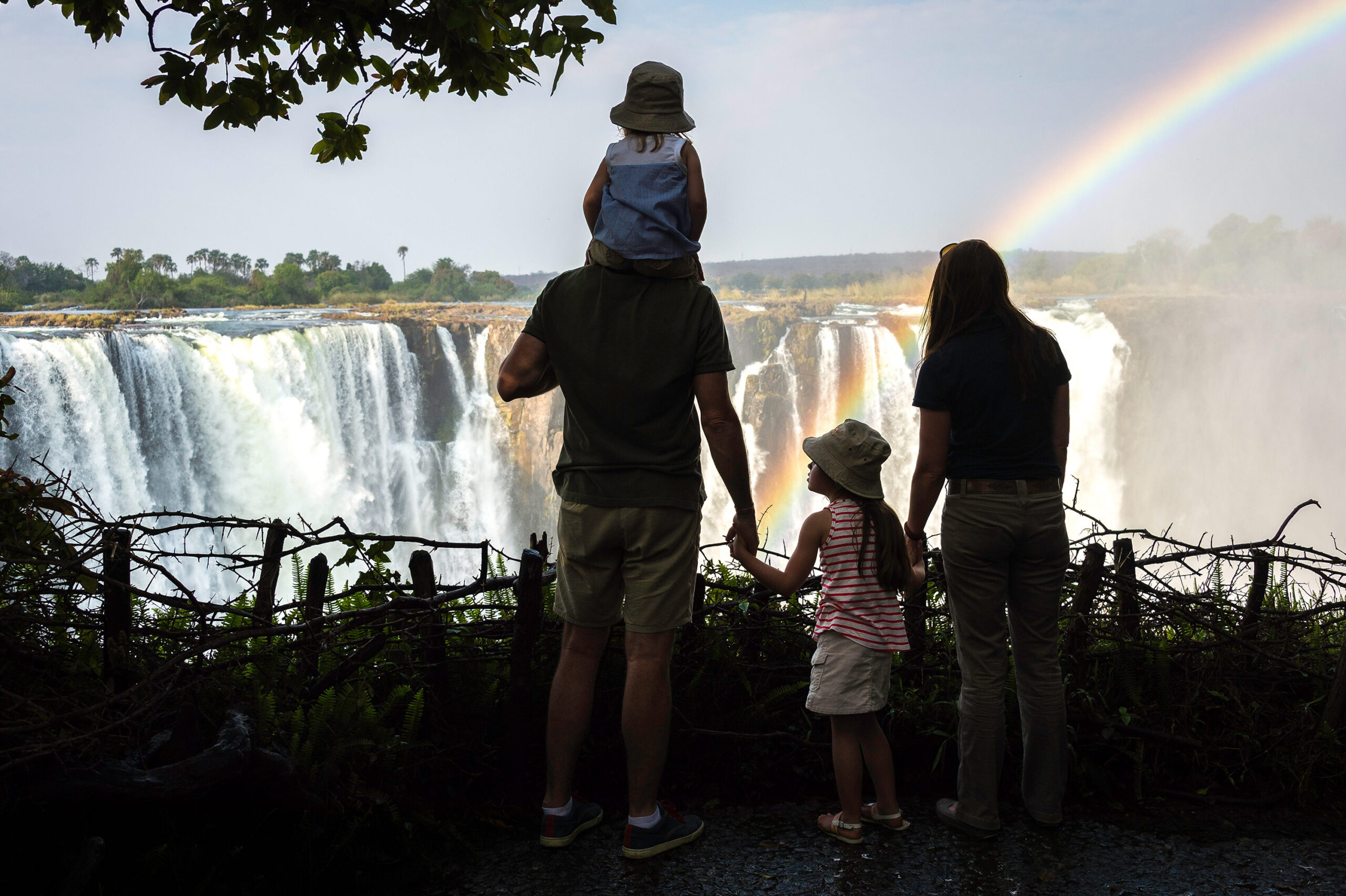
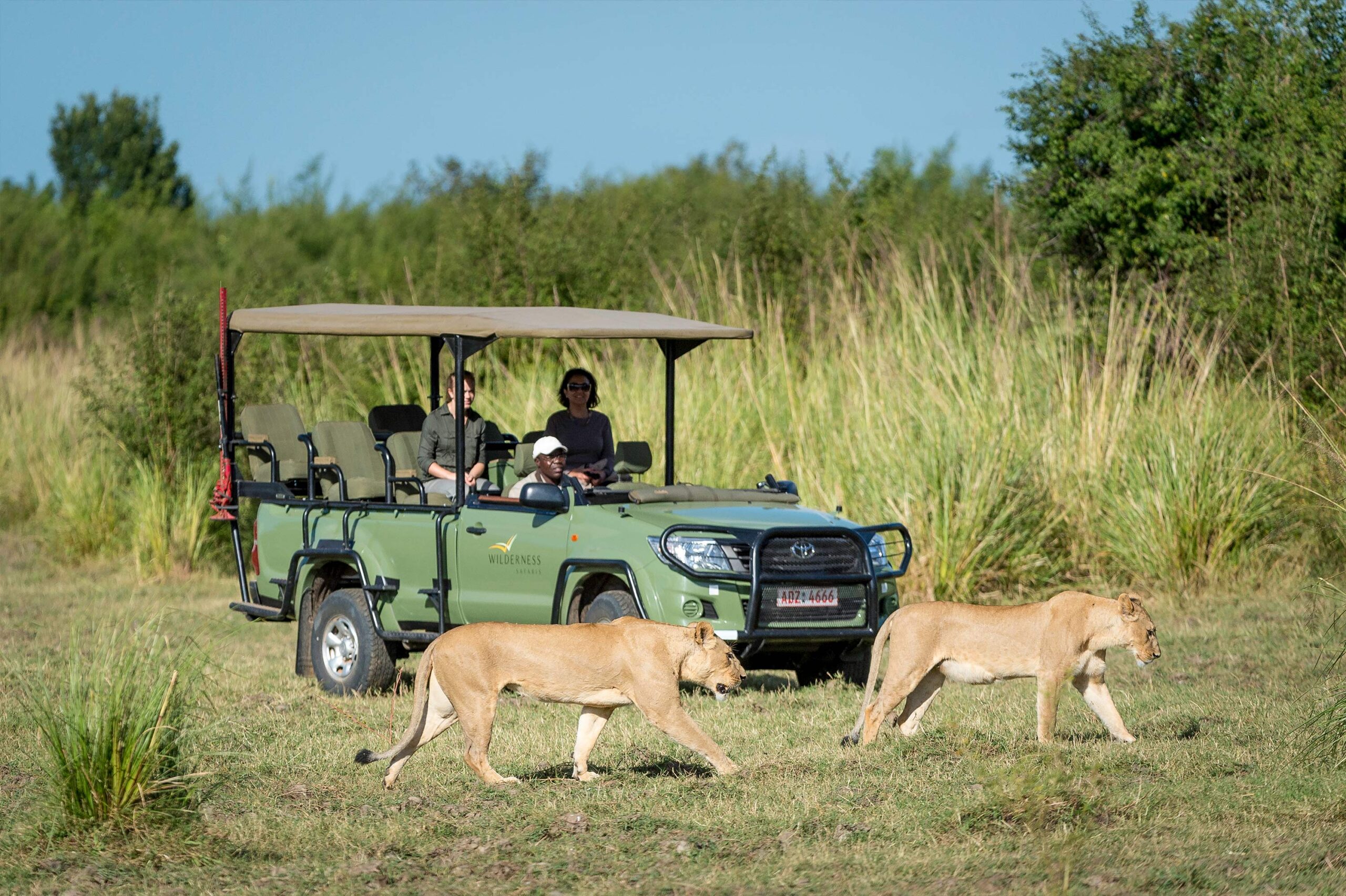
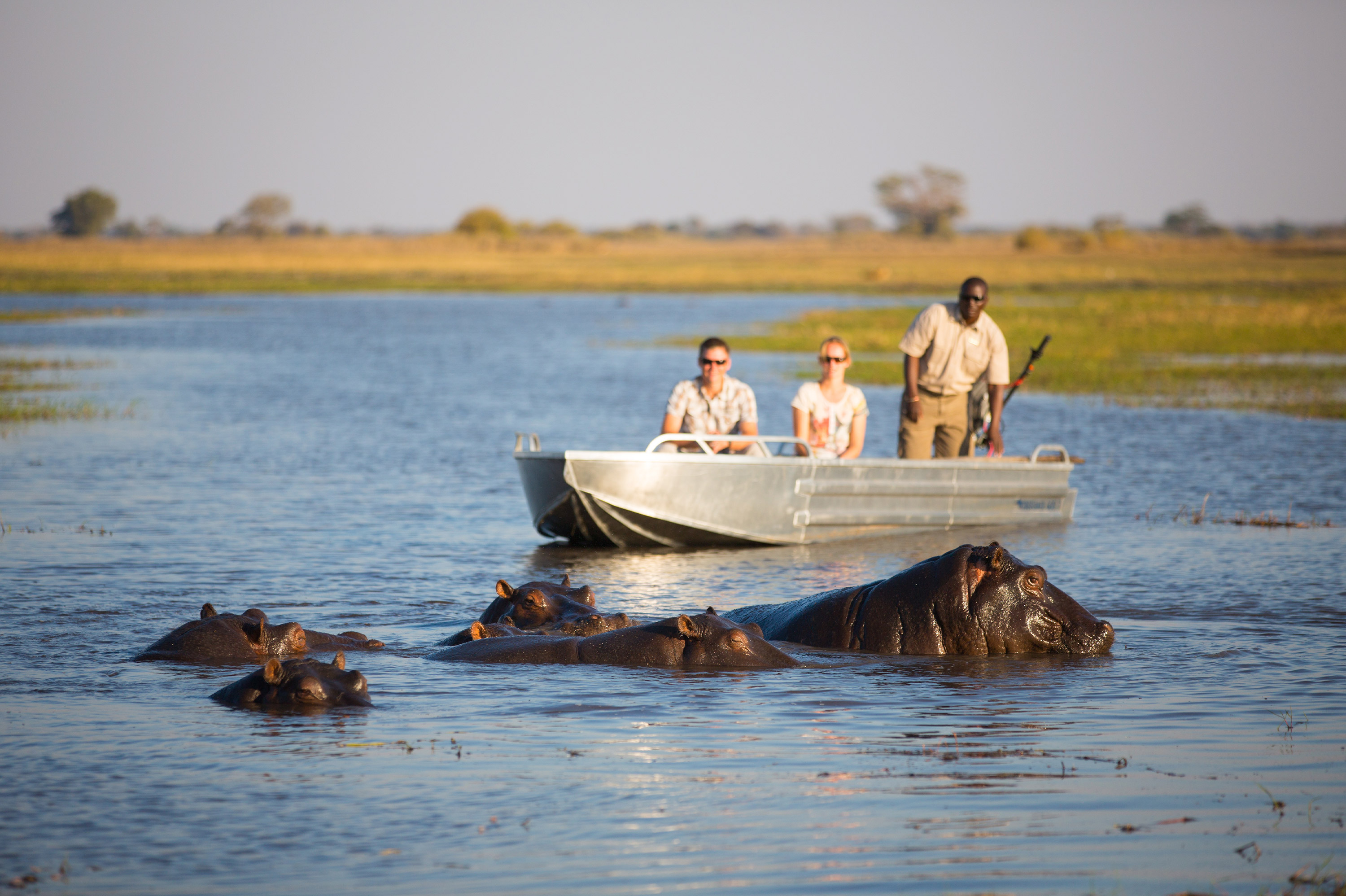
Best Time To Visit Zimbabwe
Zimbabwe is a wonderful destination delivering superb game viewing any time of the year, but the best time to go depends on your interests and activities you want to experience.
From June through October, wildlife viewing is at its best, as animals congregate around water sources throughout the dry season. The weather is also pleasant during this time with warm days and cool nights. If you’re into hiking and outdoor activities, the cooler months from May to September are perfect. The country comes alive during the rainy season from November to April, with lush greenery and stunning waterfalls, but the roads can be challenging to navigate.
Zimbabwe is a adventure destination that never fails to impress with its stunning natural beauty, thrilling activities, kind hospitality, and diverse cultural offerings.
Best Time To Visit Zambia
Zambia is a great vacation spot any time of year; however, the ideal time to visit depends on your itinerary.
If you’re interested in wildlife viewing, the dry season from June to October is the best time to go. Animals concentrate near water sources, making them more visible, during this time of year. arm, bright days are accompanied by cold evenings, making for a very agreeable climate. For birdwatchers, the rainy season from November to April is ideal. The country’s many water sources attract a plethora of bird species, including the rare shoebill stork. The rainy season also brings lush greenery and stunning waterfalls, making it a great time for outdoor activities.
Traveling to Zambia at any time of year will reward you with breathtaking scenery, welcoming people, and stories you’ll never forget.
Month-by-Month Guide To Traveling in Zimbabwe
The much-anticipated question from travelers is, ‘When should we travel to Zimbabwe’! ‘Year round’, as it depends on the activities that interest you.
In the safari regions, during dry years, the rainy season should be coming to a close. The once green grass would now be turning yellow, and the animals would be migrating back towards the network of permanent waterholes. This migration typically leads to an increase in animal sightings.
While the colder weather of the previous season may linger into July and August, it has little impact on safari since the days are beautiful and there are seldom any insects around. It should be ideal weather from August through September.
During this time, the water flow rates in the Zambezi River can decrease significantly, resulting in Victoria Falls nearly drying up and significantly diminishing the quality of the white-water rafting experience. Most camps offer significant discounts during November and December.
Wildlife is spread out throughout the parks and spotting them behind tall grasses adds to the excitement. Temperatures and humidity are often elevated, in short, the weather is nice making it a good time to visit Zimbabwe.
Month-by-Month Guide To Traveling in Zambia
June is a great time to visit as the ground dries up after the rains. Rivers remain full and the bush is vibrant. National park camps are available for game viewing in South Luangwa, cruises and fishing in Lower Zambezi, and remote wilderness in Kafue.
Victoria Falls remains impressive despite being less dramatic than in previous months. Thousands of carmine bee-eaters nest on river banks.
The rains come in the latter part of November-December, although they are not regular and are accompanied by stunning skies and stormy clouds. It's hot and humid. Many campgrounds remain operating and provide good value. Many newborn animals may also be visible to you. The jungle becomes denser and more vibrant as the rains continue to fall on a regular basis and the rivers rise.
Wildlife viewing can become more challenging due to the animals being more spread out and the tall grass providing additional cover. This often results in a decrease in the number of sightings. The temperatures and humidity are often greater than normal, albeit not always to the same degree as the previous season. The conditions are generally pleasant.
8 days Itinerary to Zimbabwe and Victoria Falls
Here is an inspiring action-packed itinerary with accommodations in authentic bush camps and luxury lodges. Xplorearth travel experts will further customize your itinerary to suit your travel interests. Guided safari walks, game drives in the wilderness, helicopter rides over Victoria Falls, river cruise safari, night game drives…
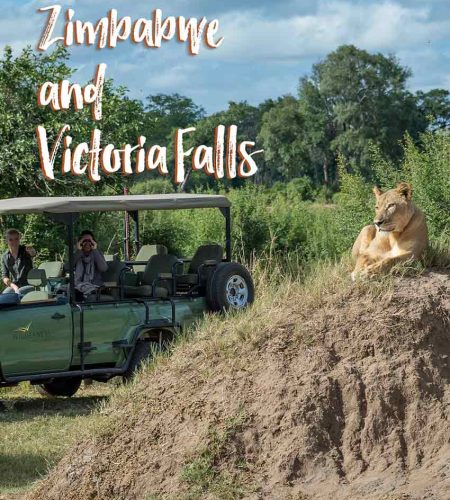
Day One: Arrival in Victoria Falls, Zimbabwe. Visit the grand Victoria Falls, explore an African village, and celebrate the sunset with a cruise on the Zambezi River.
Day Two: Spend the day in the Vic Falls area enjoying the sprays for the thundering falls or choose from many high-wired activities.
Day Three: Following breakfast, take a private jet to Hwange National Park, Zimbabwe.
Day Four:Enjoy the much-awaited game drives at Hwange National Park.
Day Five: Hop on a private jet transfer to Mana Pools National Park, Zimbabwe.
Day Six: Choose from fantastic activities, game drives, river cruises, canoeing, nature walks, and fishing at Mana Pools National Park.
Day Seven: Explore more of Mana Pools for wildlife spotting
Day Eight: Transfer to Harare and departure.
You can even partake in hands-on conservation efforts by adding activities like white Rhino tracking on foot with naturalists and conservationists. Speak to our travel advisor Harsh Patil, to design your dream safari vacation. Come #xplorearthwithus

People, food and culture
The main cultural groups in Zimbabwe are the tribes of Shona and the Ndebele. The Shona people were considered to be the founders of the regional empire and the ancient capital city of Zimbabwe. Today, approximately 85 percent of the population identifies itself with this group. Music is highly regarded in Shona culture with rhythms and sounds created on mbira (finger piano), ngoma (drum) and marimba ( wooden xylophone) The Ndebele are renowned for their artistic talent with beautiful wall art adorning their homes. Culturally, the spirit world plays a big role in native Zimbabwean culture, with festivals marking death anniversaries, and reverence towards ancestors. Sadza is a common food item in the households of this region. It is a simple dish made of cornmeal mixed with stew and is often eaten alongside Muboora, a soup preparation of pumpkin leaves that are cooked in a curry. Finally, to beat the heat, don’t forget to try the Maheu, a local energy drink that will instantly revive you!
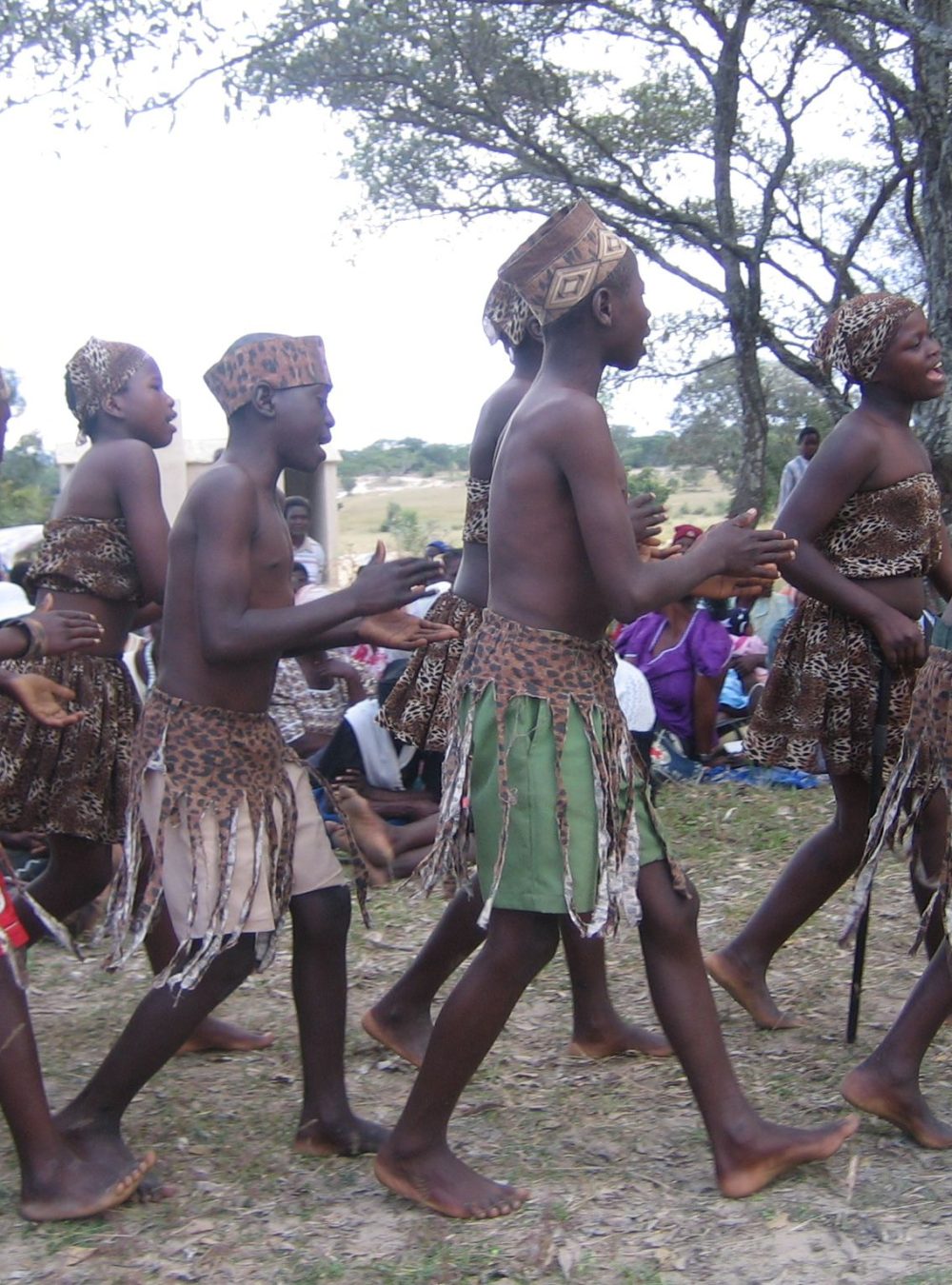

Languages spoken:
English, Shona, Chewa, Ndebele-to name just a few!

Fun Fact
More than half of the population of the country is under the age of 21!

One reason you should go here
Witness the awe inspiring Victoria Falls, the largest in the world, from a helicopter. Bungee jump off the bridge connecting the 2 countries or for the craziest experience of all or raft down the mighty Zambezi river in Class V rapids.
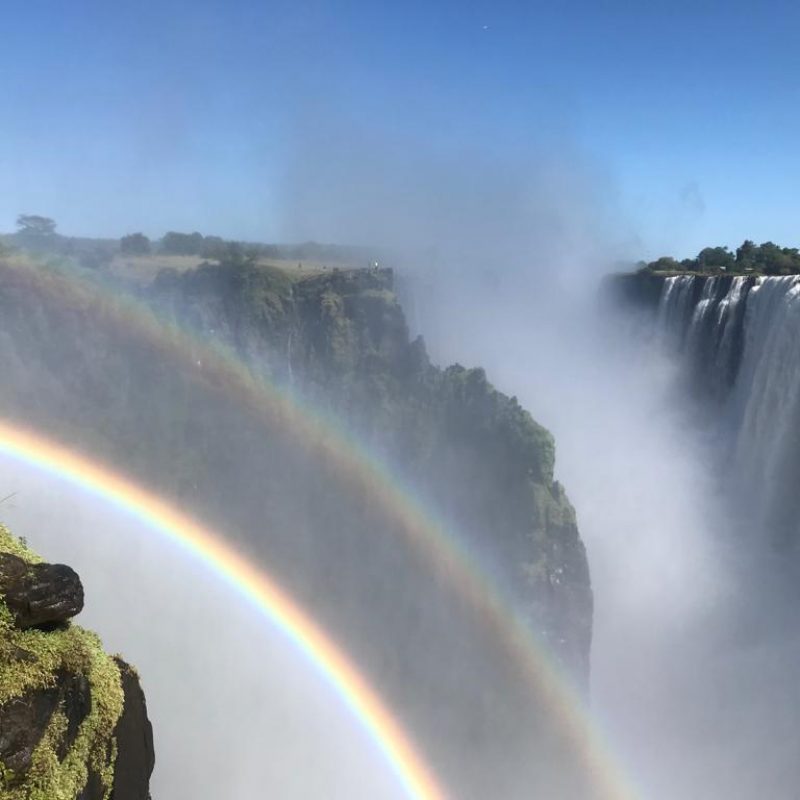
Travel FAQs on visiting Zambia and Zimbabwe
Zambezi is a river that flows through both Zambia and Zimbabwe. This river ranks as the fourth largest in Africa. The powerful Zambezi River traverses multiple countries, including Victoria Falls, Lake Kariba, and the Lower Zambezi National Park. Mana Pools National Park and finally reaches the Indian Ocean via Mozambique. The banks of the river provide ample opportunities for game viewing from a canoe, houseboat, or boat. The river also supports the wilderness areas in the national parks and provides some of the best sightings of pods of hippos and prolific crocodiles.
Zambia is a landlocked country situated mostly on a plateau with great valley hills and some mountains, the Zambezi is the main river with its tributaries of Luangwa and Kafue. Zambia shares borders with several countries namely the Democratic Republic of the Congo, Angola, Namibia, Botswana, Zimbabwe, Mozambique, Malawi, and Tanzania.
Zimbabwe is located in southern Africa. It shares borders with Malawi, Mozambique, South Africa, Botswana, Namibia, and Zambia.
If you have received all the necessary routine vaccinations, including Tetanus, no additional vaccinations are required for traveling to Zambia or Zimbabwe. The CDC recommends getting vaccinated against Hepatitis A, Malaria, and Typhoid. It is always recommended to have your proof of immunization with you.
Zambia is most famous for the alluring Victoria Falls in Livingstone and superb remote safari locations. It’s a significant copper and mineral producer. The diverse wildlife in the country, including elephants and leopards, makes it a popular safari destination.
The Zambezi River flows along the border between Zambia and Zimbabwe. The Zambezi is the fourth-longest river in Africa after the rivers Nile, Congo, and Niger.
The official language of Zambia is English, but Bemba, Nyanja, Tonga, and other indigenous languages are also widely spoken.
The official language of Zimbabwe is English, inherited from colonial times. However, there are also several indigenous languages spoken, including Shona and Ndebele.
Short-term visitors to Zimbabwe or Zambia for business or leisure can get a “visa on arrival” at the country’s international airports.
However, in order to save the time upon arrival, it is advised to get the tourist eVisa online.
The dry season in Zambia, which lasts from May to October, is the greatest time to visit because of the abundance of animals. The green season, on the other hand, is a great time to come because of the unique and lovely surroundings.
The spectacular views of Victoria Falls, one of the seven natural wonders, can be enjoyed from both Zambia and Zimbabwe. However, some of the grander views of the falls can be seen from the Zimbabwean side. The Zambian side, on the other hand, allows visitors to get a closer look and even take a dip in the Devil’s Pool. You can combine a wildlife safari in Zimbabwe or Zambia with a visit to Victoria Falls.
The Zambezi River is a true wanderer, flowing across four countries (Namibia, Botswana, Zambia, and Zimbabwe) and forming the boundary of two others (Angola and Mozambique). As the fourth longest river on the African continent, it boasts a depth of up to 1700 meters, making it a hotspot for diverse and thriving wildlife.
Consider weather and activities when packing for a trip to both Zimbabwe or Zambia. Bring light, breathable clothes, comfy shoes, sunscreen, bug spray, and a hat. And a must-have is your camera with extra batteries, a waterproof camera case is much advised, and maybe a GoPro to capture the wildlife sightings in these rich predator national parks, the thundering Vic Falls, and the grandeur of the Zambezi River surroundings.








